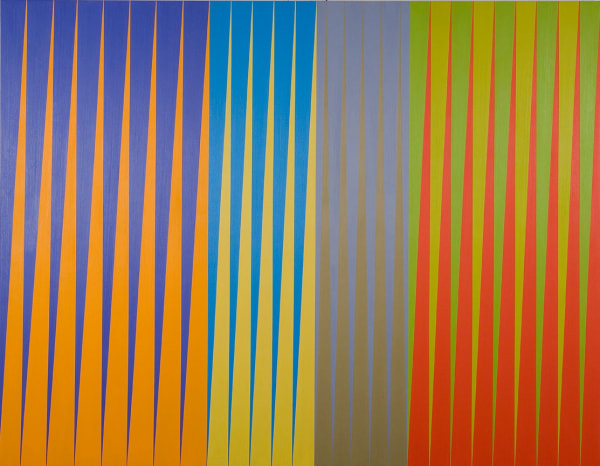Three One-Man Exhibitions: James Little, Aimé Mpane, George Smith: Station Museum of Contemporary Art | Houston, TX
Great artistic skill, truthfulness, idealism, vision and passion are fundamental to the creation of a profoundly spiritual art. In this ravaged time of endless war, a fresh approach to the spiritual needs of the American people is critical to their mental health. Who can we turn to but artists and musicians who are free of the consumer orientation of contemporary culture and who are free of the nationalism that distorts the teachings of established religions. Exceptional artists who struggle to express their inner life and who endure the intense solitude of a spiritual quest are few in number, hard to find, and rarely celebrated. Nevertheless, they exist. James Little is one of them.
James Little’s paintings are original, sophisticated, and profound. They are expressionist and ceremonial in essence. They are quite distinct from earlier approaches to non-objective and hard edge painting. Little’s paintings use geometry and color in a way that reaches beyond their historical sources in Modern Art and go on to express a social and spiritual dynamic that is new to American art.
Earlier modern artists focused on the fundamentals of structure, color, and on the relationship between the pared-down, constituent elements of painting. However, the great artists of this persuasion were not purists, formalists, or devotees of art for art sake. They faced the critical issue of the spiritual versus the social content of their art. Mondrian’s neo-platonic paintings are the expression of his fervent idealism and mysticism. Malevich’s paintings are icons of revolutionary rebirth. Albers’ Aristotelian paintings reveal his color discoveries in the context of the unchanging, universal form of the square. Newman’s non-Euclidean paintings evoke the profoundly human drama of Jewish mysticism at the same time that they successfully challenge and go on to expand the Western tradition of painting.
Little has immersed himself in the same tradition of painting and enriched it and expanded it with a personal vision rooted in his African American and American Indian heritage. His paintings have soul — the power to ignite the spirit. Like the best Jazz, they express powerfully distilled emotions and take the art of painting to a level of intensity and conviction that is rare in contemporary American art. Little’s compositions are bold and supremely intelligent. With great simplicity, the artist creates a complex dynamic, using unique combinations of resonant colors and fundamental geometry. Triangular vectors move his color decisively up, down and across the canvas. There is an underlying rhythm and a reference to African design and to American Indian symbols as well as an abiding beauty, and the powerful impression or feeling that “something or someone” is fully on the move. Little’s paintings communicate the enduring spiritual power of his African American and American Indian heritage and occupy an important place in the history of modern American art.
—James Harithas

-

James Little
Portrait of a Star, 2002.
Oil and wax on canvas
78 x96 in.
-

James Little
The Marriage of Western Civilization and Law of the Jungle, 2007.
Oil and wax on canvas
76 x 98 in.
-

James Little
Einstein’s Axiom, 2006.
Oil and wax on canvas
76 x 98 in.
-

James Little
Picasso’s Funeral, 2006.
Oil and wax on canvas
76 x 98 in.
-

James Little
Bitter-Sweet Victory, 2006.
Oil and wax on canvas
76 x 98 in.









